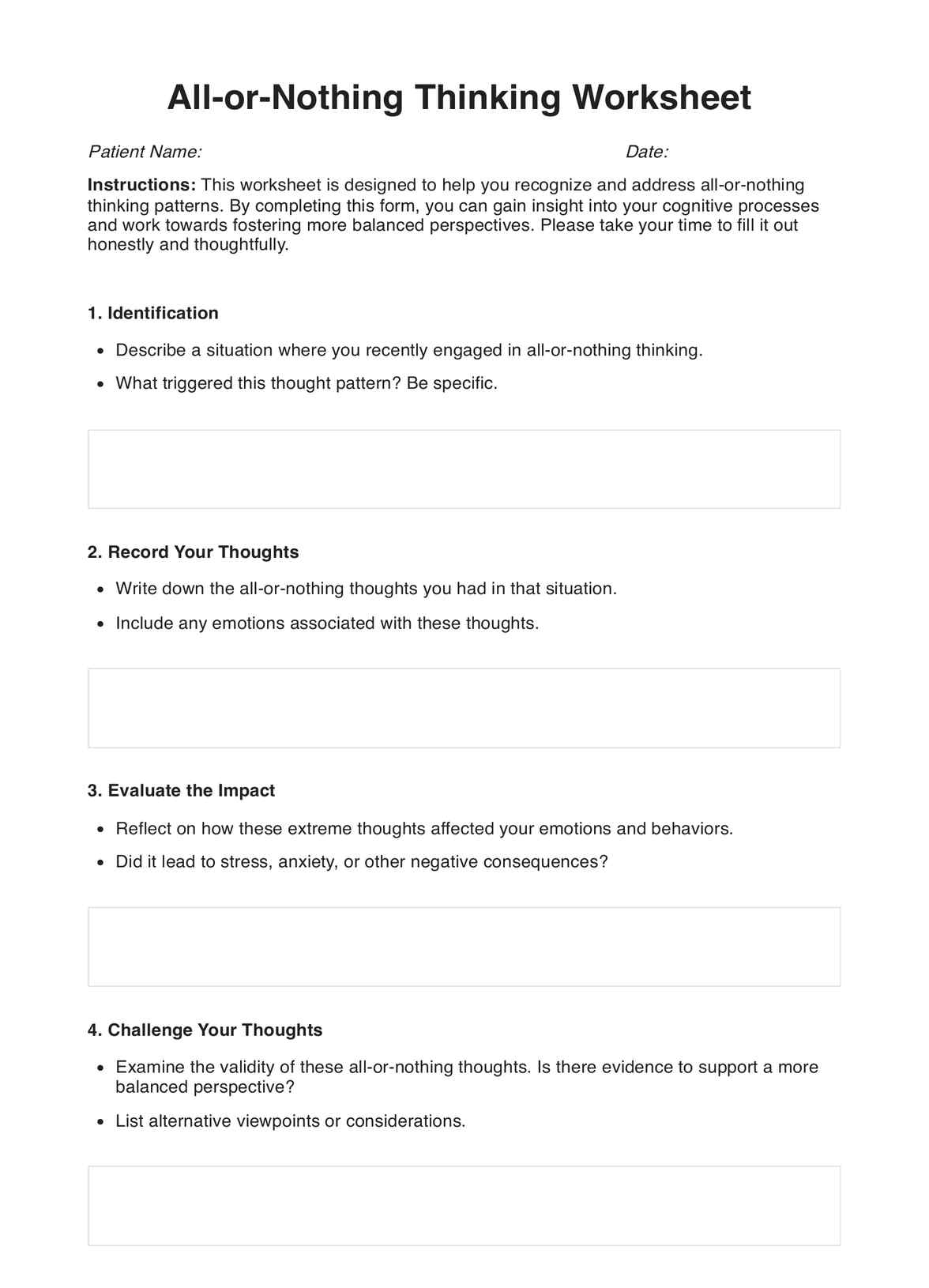All-or-nothing thinking Worksheets are typically used by individuals seeking to improve their mental well-being, therapists, counselors, educators, and personal development enthusiasts.

All Or Nothing Thinking Worksheets
Improve mental well-being with our All-or-nothing Thinking Worksheet. Challenge extreme thoughts and foster balanced perspectives. Download now.
Use Template
All Or Nothing Thinking Worksheets Template
Commonly asked questions
These worksheets are used when individuals want to address and change their black-and-white, extreme thinking patterns, often associated with stress, anxiety, or relationship issues.
The All-or-Nothing Thinking Worksheet helps individuals recognize their cognitive distortions, manage emotions, improve decision-making, reduce stress, enhance relationships, and develop problem-solving skills by promoting balanced thinking patterns.
EHR and practice management software
Get started for free
*No credit card required
Free
$0/usd
Unlimited clients
Telehealth
1GB of storage
Client portal text
Automated billing and online payments











